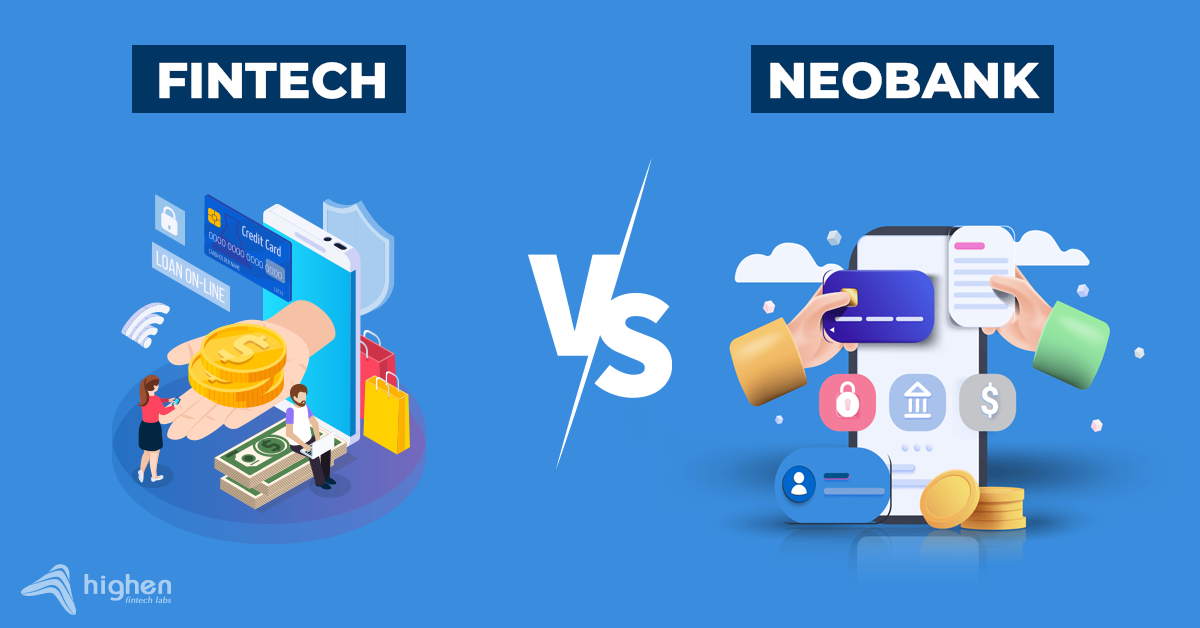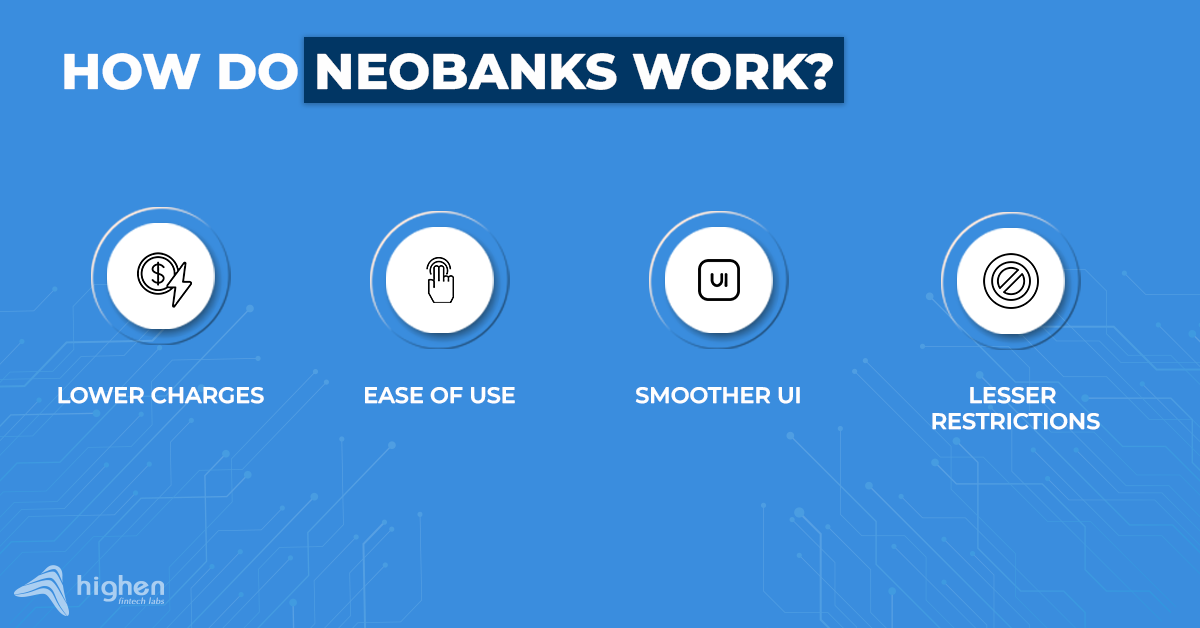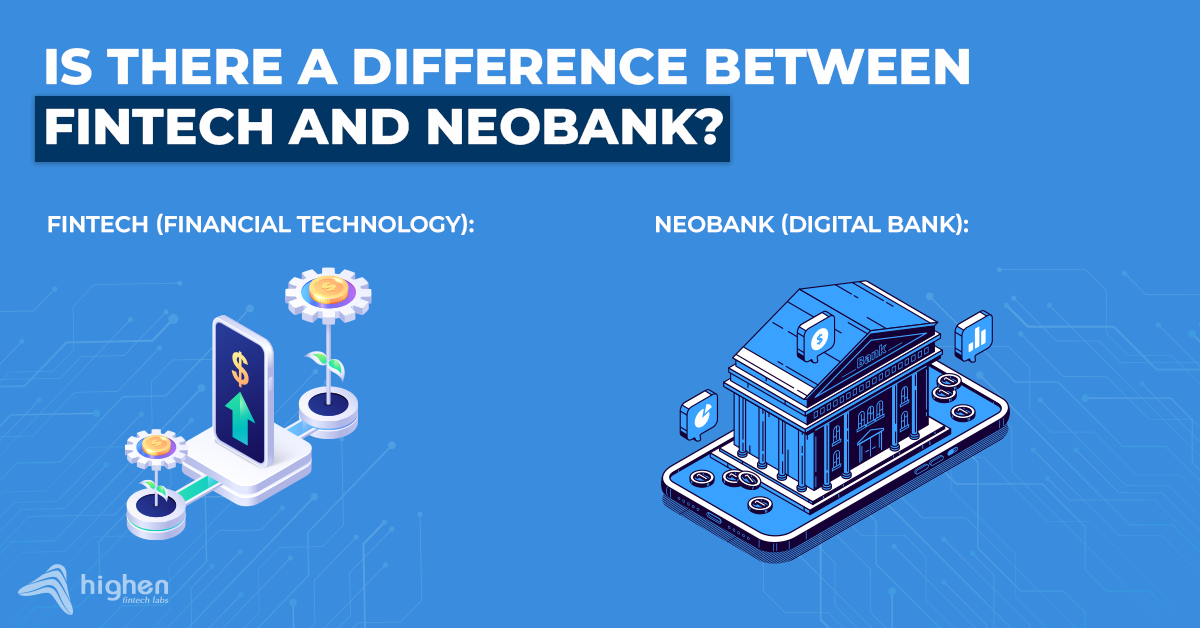Neobank vs. Fintech

Neobank vs. Fintech : What is the Best for Business
Due to the evolving financial services sector, small businesses have a wealth of financial options. “Neobanks” and “Fintech” offer innovative banking solutions, gaining widespread popularity. But which one fits your small business the best? To assist you in understanding the benefits and restrictions of each, we shall examine the differences between Neobanks and Fintech solutions in this article. In conclusion, you will be better prepared to choose the financial technology path that best suits your company’s objectives and requirements. Hiring a Fintech App Development Company is the best solution to get an amazing app built with security and bug-free.
What is a Neobank?
Neobanks are relatively new actors in the banking industry; unlike traditional banks, they don’t have physical branches or established legacy systems. Instead of physically visiting a bank office, Neobank users may access their accounts using mobile applications and internet portals. Neobanks typically offer competitive rates on products like loans and credit cards compared to fintech and traditional banks, which makes them appealing to small businesses looking to save money. Fintech benefits from lower overhead costs, as it operates without physical branches and costly IT infrastructure, which traditional banks require. These tech-driven financial services aim to enhance and streamline financial processes, offering payment processing, investment management, lending, insurance, and financial planning, among other benefits. Neobanks and fintech make handling finances more convenient, but there are still significant distinctions between the two business models. While fintechs usually push the envelope with novel products like peer-to-peer payment systems or cryptocurrency investments, neobanks typically concentrate on classic banking operations like deposits and loans. Furthermore, whereas fintechs may operate under many legal regimes, neobanks often need a complete retail banking license.
Why are neobanks popular?
As they provide several advantages to fulfill the changing demands of new-age consumers, neobanks are increasingly becoming a preferred option for many clients. Neobanks prioritize user-friendly, tech-driven services. India’s rapid internet and smartphone growth has made neobanks popular, particularly among millennials and tech-savvy individuals. Numerous millennials and tech-savvy people have been drawn to this. Neobanks vary from conventional banks in the following ways:
-
- Long lines at traditional brick-and-mortar banks may feel interminable to customers. Neobanks’ internet presence makes it simple for users to create savings accounts, complete with a debit card.
- Neobanks provides fantastic deals on credit cards. Neobanks are quickly becoming a potential alternative to traditional banks, which are reluctant to provide financial services to specific companies and sectors (such as startups). Based on company performance, some neobanks even provide high-limit, unsecured credit cards.
- Neobanks strive to serve some underbanked groups and provide a broad range of services, such as startup and individual loans. Neobanks are doing this to address and close the gap between conventional banks, people, and expanding enterprises worldwide.
How do neobanks work?
Neobanks operate exclusively online, utilizing user-friendly apps and websites. They offer services like checking, savings, payments, and even loans, aiming to streamline and enhance the banking experience through digital accessibility. Neobanks often collaborate with fintech consulting partners to expand their service offerings, prioritizing affordability and user-centric solutions. Anyone wishing to take advantage of the ease and creativity that neobanks offer to the world of finance must have a thorough understanding of how they operate. They provide digital and mobile-first financial solutions for loans, payments, and other tasks. Customers can use them to deposit and withdraw money. There are services like debit cards and investing opportunities accessible. They even provide credit and lending services. However, most neobanks need a banking license and cannot function independently; instead, they collaborate with authorized banks to offer financial services.

1. Lower Charges
Neobanks’ absence of physical branches leads to cost savings (rent, infrastructure) that translate into customer benefits like lower fees, higher interest rates, and enhanced banking services.
2. Ease of Use
Neobanks prioritize user-friendly, tech-driven services. India’s rapid internet and smartphone growth has made neobanks popular, particularly among millennials and tech-savvy individuals.
3. Smoother UI
The primary strategic objective for financial institutions in 2018 was to enhance the digital experience for clients. Neobank develops applications to improve online banking. Neo-apps are stylish, functional, and simple to use. Traditional financial institutions were forced to build digital offerings to keep up with the developments. However, because conventional brick-and-mortar banks are not digital first, their applications have bugs and latencies.
To produce some of the most streamlined and fluid banking experiences accessible in fintech, neobanks have access to the best talent on the market.
4. Lesser Restrictions
Neobanks lack banking licenses and are not regulated by the RBI, making them false banks. Consequently, they have slightly greater independence than traditional financial institutions. Due to their exemption from the laws and regulations that apply to regular banks, they may maintain low costs.
Is there a difference between fintech and neobank?
In financial services, “neobank” and “fintech” are related but distinct. Neobanks are digital-only banks, while fintech covers a wide range of tech-driven financial services:

-
Fintech (Financial Technology):
- Fintech encompasses tech-driven financial services, using technology to enhance and expedite financial processes, including payment, investment, lending, insurance, and financial planning for improved efficiency.
- They are technologically oriented businesses that frequently work with established banks and financial institutions to enhance their offerings or develop whole new financial solutions.
2. Neobank (Digital Bank):
- A subclass of fintech known as a “neobank” refers mainly to online-only, digital banks. Neobanks exclusively function in the digital realm, devoid of any physical branches. They provide various financial services such as checking, savings, and payments and prioritize a mobile-centric, user-friendly banking experience. Some may specialize in banking, while others partner with fintech companies to extend their financial offerings.
- Neobanks is a fintech firm that only works in the banking industry and provides digital banking services without physical branches. Neobanks are part of the broader “fintech” landscape, which includes various tech-driven financial services. Fintech and neobanks have significantly impacted the financial industry by introducing innovative solutions, improving customer experiences, and disrupting traditional banking models.
Conclusion
Your particular needs, tastes, and objectives ultimately determine whether you choose a Neobank or a Fintech platform in your search for the ideal financial solution for your small business. Fintech Software Development Company can help you decide what you can opt for to fulfill your business goals and objectives. While Fintech solutions offer specialized tools and services, Neobanks provides a more holistic, all-in-one banking experience. When choosing the right financial tools, consider your organization’s size, financial goals, and tech comfort. Opt for what best supports your business’s economic success and provides the necessary resources in a dynamic digital market.
